-
 Bitcoin
Bitcoin $101,898.5005
-0.75% -
 Ethereum
Ethereum $2,258.1125
-1.07% -
 Tether USDt
Tether USDt $1.0004
0.01% -
 XRP
XRP $2.0178
-2.93% -
 BNB
BNB $624.0243
-1.53% -
 Solana
Solana $134.3298
-0.90% -
 USDC
USDC $0.9999
0.01% -
 TRON
TRON $0.2675
-2.05% -
 Dogecoin
Dogecoin $0.1538
-1.96% -
 Cardano
Cardano $0.5482
-1.11% -
 Hyperliquid
Hyperliquid $35.5636
5.45% -
 Bitcoin Cash
Bitcoin Cash $453.4902
-1.66% -
 Sui
Sui $2.5134
-2.97% -
 UNUS SED LEO
UNUS SED LEO $9.1292
1.77% -
 Chainlink
Chainlink $11.8457
-1.60% -
 Stellar
Stellar $0.2312
-2.73% -
 Avalanche
Avalanche $16.9721
0.29% -
 Toncoin
Toncoin $2.7549
-3.82% -
 Shiba Inu
Shiba Inu $0.0...01081
-1.10% -
 Litecoin
Litecoin $80.8250
-0.71% -
 Hedera
Hedera $0.1374
0.21% -
 Monero
Monero $305.4827
-2.36% -
 Ethena USDe
Ethena USDe $1.0006
0.00% -
 Dai
Dai $1.0000
-0.01% -
 Polkadot
Polkadot $3.2085
-3.12% -
 Bitget Token
Bitget Token $4.0845
-3.13% -
 Uniswap
Uniswap $6.3353
-1.63% -
 Pi
Pi $0.5085
-0.70% -
 Pepe
Pepe $0.0...08913
-3.82% -
 Aave
Aave $232.7090
-0.58%
Is OBV still effective in a bear market? How to use this indicator in a weak market?
OBV can signal potential reversals in bear markets by showing divergence from price, but it's best used with other indicators for confirmation.
May 23, 2025 at 03:57 am
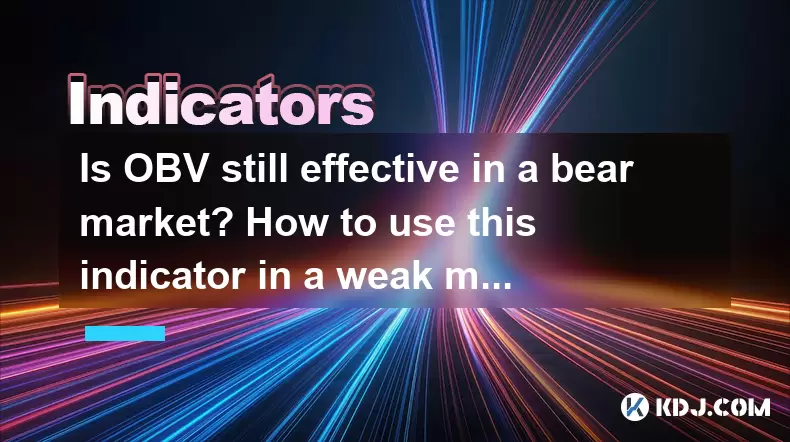
Is OBV still effective in a bear market? How to use this indicator in a weak market?
The On-Balance Volume (OBV) indicator is a technical analysis tool that measures buying and selling pressure as a cumulative indicator, adding volume on up days and subtracting it on down days. While it is commonly used in bullish markets to confirm trends, its effectiveness in bear markets is often debated. This article will explore whether OBV remains a useful tool during bearish conditions and provide a detailed guide on how to use it effectively in a weak market.
Understanding OBV and Its Relevance in Bear Markets
OBV is based on the principle that volume precedes price movement. When the OBV line rises, it suggests that buying pressure is increasing, which can be a bullish signal. Conversely, a falling OBV line indicates increasing selling pressure, which is typically bearish. In a bear market, where prices are generally declining, the question arises whether OBV can still provide valuable insights.
In bear markets, OBV can be particularly useful for identifying potential reversals or confirming the continuation of a downtrend. If the OBV line starts to rise while prices are still falling, it could signal that the selling pressure is weakening, and a reversal might be imminent. Conversely, if the OBV continues to decline alongside the price, it confirms the bearish trend.
Using OBV to Identify Reversals in a Bear Market
Identifying potential reversals in a bear market can be challenging, but OBV can serve as a valuable tool. Here's how to use it effectively:
- Monitor Divergence: Look for instances where the OBV line starts to rise while the price continues to fall. This divergence can indicate that the selling pressure is diminishing, and a potential reversal may be on the horizon.
- Confirm with Other Indicators: Use other technical indicators, such as the Relative Strength Index (RSI) or Moving Average Convergence Divergence (MACD), to confirm the signals provided by OBV. If multiple indicators suggest a potential reversal, the signal is stronger.
- Volume Confirmation: Pay attention to volume spikes. A significant increase in volume alongside a rising OBV can confirm the strength of the potential reversal.
Confirming Bearish Trends with OBV
In a bear market, confirming the continuation of a downtrend is crucial for traders looking to capitalize on short-selling opportunities. OBV can help in this regard:
- Trend Confirmation: If both the price and OBV are declining, it confirms the bearish trend. Traders can use this confirmation to enter short positions or hold onto existing ones.
- Volume Analysis: A consistent decline in OBV with increasing volume can indicate strong selling pressure, reinforcing the bearish outlook.
- Support and Resistance: Use OBV to identify key support and resistance levels. If the OBV breaks below a significant support level, it can signal a continuation of the bearish trend.
Practical Example: Using OBV in a Bearish Crypto Market
Let's walk through a practical example of using OBV in a bearish cryptocurrency market, such as Bitcoin (BTC) during a downturn.
- Identify the Bear Market: First, confirm that the market is indeed in a bear phase by observing a consistent decline in the price of BTC over a period.
- Apply OBV: Add the OBV indicator to your chart. You can do this on most trading platforms by selecting the indicator from the list of available technical tools.
- Analyze OBV Trends: Observe the OBV line over the same period as the price decline. If the OBV is also declining, it confirms the bearish trend.
- Look for Divergence: Monitor for any signs of divergence between the OBV and the price. If the OBV starts to rise while the price continues to fall, it could signal a potential reversal.
- Confirm with Other Indicators: Use additional indicators like RSI or MACD to confirm the signals from OBV. For instance, if the RSI is also showing signs of divergence, the signal is stronger.
- Volume Analysis: Pay close attention to volume. A rising OBV with increasing volume can confirm the strength of a potential reversal.
Implementing OBV in Trading Strategies
Incorporating OBV into trading strategies can enhance decision-making in a bear market. Here are some practical steps to do so:
- Short Selling: Use OBV to confirm bearish trends before entering short positions. If both the price and OBV are declining, it's a good signal to initiate a short trade.
- Exit Strategy: Use OBV to determine when to exit short positions. If the OBV starts to rise while the price is still falling, it might be time to close the short position to avoid potential losses from a reversal.
- Risk Management: Combine OBV with other risk management tools, such as stop-loss orders, to protect against unexpected market movements.
- Long Positions: In a bear market, look for opportunities to enter long positions when OBV signals a potential reversal. Use the divergence between OBV and price as a trigger to buy.
Detailed Steps to Apply OBV on Trading Platforms
Here's a detailed guide on how to apply OBV on popular trading platforms:
- Choose Your Platform: Select a trading platform that supports technical analysis, such as TradingView, Binance, or Coinbase Pro.
- Add OBV Indicator:
- On TradingView, navigate to the chart of the cryptocurrency you're analyzing.
- Click on the "Indicators" button at the top of the chart.
- Search for "On-Balance Volume" and select it.
- Adjust the settings if necessary, such as the period and color of the OBV line.
- Analyze the Chart: Observe the OBV line alongside the price chart. Look for trends, divergences, and volume spikes.
- Set Alerts: Set up alerts for significant changes in the OBV line, such as when it crosses above or below key levels. This can help you stay informed without constantly monitoring the chart.
- Combine with Other Tools: Use other technical indicators and tools available on the platform to confirm the signals from OBV. For example, you can add RSI or MACD to the same chart.
Frequently Asked Questions
Q: Can OBV be used for all cryptocurrencies, or is it better suited for specific ones?
A: OBV can be used for any cryptocurrency that has sufficient trading volume. However, it may be more effective for cryptocurrencies with higher liquidity and trading volume, such as Bitcoin and Ethereum, as these assets tend to have more reliable volume data.
Q: How often should I check the OBV indicator in a bear market?
A: The frequency of checking the OBV indicator depends on your trading strategy. For day traders, checking it multiple times a day might be necessary. For swing traders or long-term investors, checking it daily or weekly could be sufficient. Setting up alerts for significant changes can also help manage the frequency of monitoring.
Q: Are there any limitations to using OBV in a bear market?
A: Yes, there are limitations to using OBV in any market, including bear markets. One major limitation is that OBV relies on volume data, which can be manipulated or inaccurate in some cases. Additionally, OBV is a lagging indicator, meaning it confirms trends after they have already started, which might not be ideal for traders looking for early entry points.
Q: Can OBV be used in conjunction with fundamental analysis in a bear market?
A: Absolutely, OBV can be used alongside fundamental analysis to provide a more comprehensive view of the market. While OBV focuses on technical aspects like volume and price movement, fundamental analysis can provide insights into the underlying value and health of a cryptocurrency. Combining both approaches can lead to more informed trading decisions.
Disclaimer:info@kdj.com
The information provided is not trading advice. kdj.com does not assume any responsibility for any investments made based on the information provided in this article. Cryptocurrencies are highly volatile and it is highly recommended that you invest with caution after thorough research!
If you believe that the content used on this website infringes your copyright, please contact us immediately (info@kdj.com) and we will delete it promptly.
- Cryptocurrencies, Coingecko, and Trending Tokens: What's Hot Now?
- 2025-06-23 23:05:12
- Bitcoin, Meerkat, and Onchain Engagement: A New Era of Crypto
- 2025-06-23 23:25:12
- Cloud Mining, Bitcoin, and XRP: A 2025 Perspective
- 2025-06-23 23:25:12
- Neo Pepe Coin: Meme Crypto with Explosive Potential?
- 2025-06-23 23:45:12
- FUNToken: Decoding Past Trends and Getting Started in the Gaming Crypto Sphere
- 2025-06-23 22:25:12
- Eyenovia Goes Crypto: A HYPE Treasury and Potential Rebrand
- 2025-06-23 23:45:12
Related knowledge

Is it contradictory that the moving average system is arranged in a bullish pattern but the DMI shows a decline in trend strength?
Jun 23,2025 at 11:43pm
Understanding the Moving Average and DMI RelationshipIn cryptocurrency trading, technical analysis plays a crucial role in identifying potential trends and making informed decisions. Two of the most commonly used indicators are the Moving Average (MA) and the Directional Movement Index (DMI). While both tools aim to provide insight into market direction...

What is the significance of the gap formed by the gap opening not being filled within five days?
Jun 23,2025 at 09:42pm
Understanding Gaps in Cryptocurrency TradingIn the world of cryptocurrency trading, a gap refers to a situation where the price of an asset jumps from one level to another without any trading activity occurring between those two levels. This often happens over weekends or holidays when the market is closed, and significant news or events occur that impa...
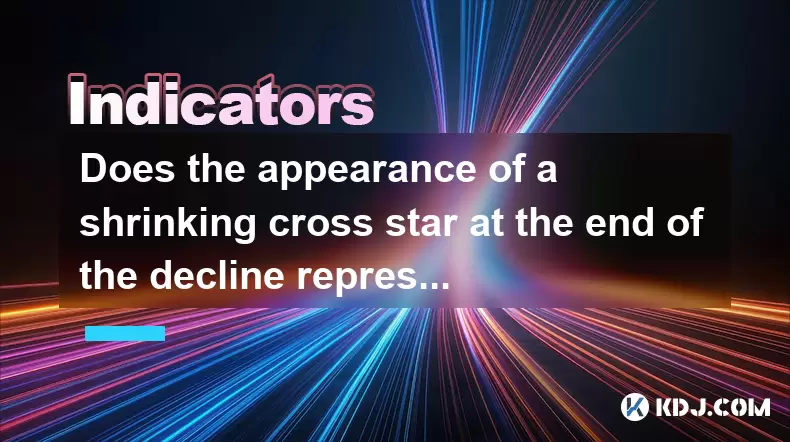
Does the appearance of a shrinking cross star at the end of the decline represent a signal to stop the decline?
Jun 24,2025 at 12:14am
Understanding the Shrinking Cross Star PatternIn the world of cryptocurrency trading, candlestick patterns play a crucial role in technical analysis. One such pattern is the shrinking cross star, which often appears at the end of a downtrend. This pattern consists of a candle with a small body, typically appearing after a series of bearish candles, and ...
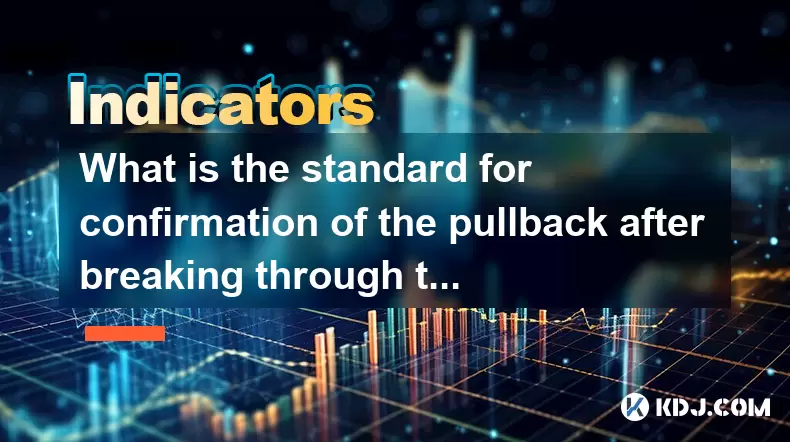
What is the standard for confirmation of the pullback after breaking through the neckline with large volume?
Jun 23,2025 at 11:28pm
Understanding the Neckline in Technical AnalysisIn technical analysis, the neckline is a critical support or resistance level that appears in chart patterns such as head and shoulders, double tops, and double bottoms. It typically connects two or more lows (in the case of a head and shoulders top) or highs (in the case of a head and shoulders bottom). W...
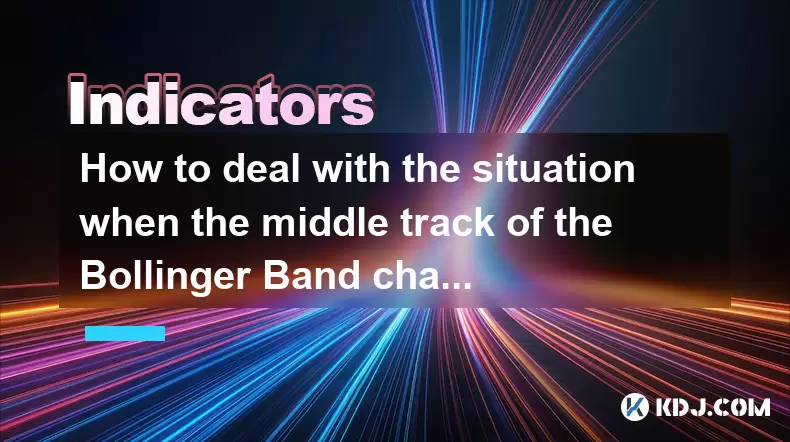
How to deal with the situation when the middle track of the Bollinger Band changes from support to resistance?
Jun 23,2025 at 11:22pm
Understanding the Bollinger Band Middle TrackThe Bollinger Band is a widely used technical indicator in cryptocurrency trading. It consists of three lines: the upper band, the lower band, and the middle track, which is typically a 20-period simple moving average (SMA). Traders often rely on the middle track as a dynamic support or resistance level. Howe...
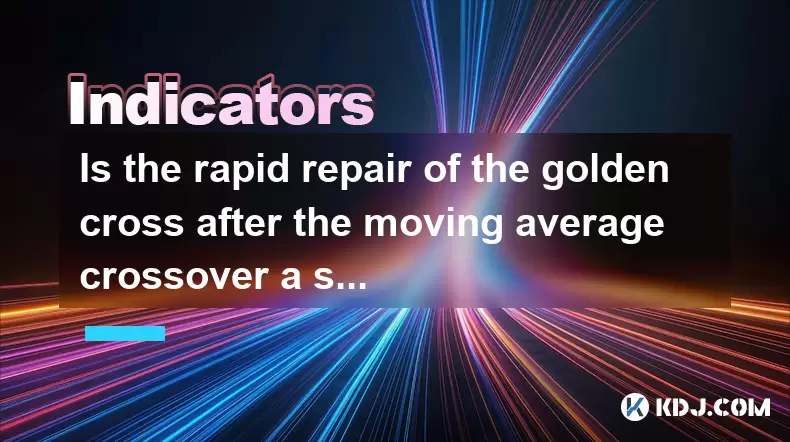
Is the rapid repair of the golden cross after the moving average crossover a signal of inducing short selling?
Jun 24,2025 at 12:01am
Understanding Moving Averages and Their Role in Technical AnalysisIn the realm of technical analysis, moving averages (MAs) are among the most widely used tools by traders to identify trends and potential reversals. These indicators smooth out price data over a specific time period, offering a clearer view of market direction. The two most common types ...

Is it contradictory that the moving average system is arranged in a bullish pattern but the DMI shows a decline in trend strength?
Jun 23,2025 at 11:43pm
Understanding the Moving Average and DMI RelationshipIn cryptocurrency trading, technical analysis plays a crucial role in identifying potential trends and making informed decisions. Two of the most commonly used indicators are the Moving Average (MA) and the Directional Movement Index (DMI). While both tools aim to provide insight into market direction...

What is the significance of the gap formed by the gap opening not being filled within five days?
Jun 23,2025 at 09:42pm
Understanding Gaps in Cryptocurrency TradingIn the world of cryptocurrency trading, a gap refers to a situation where the price of an asset jumps from one level to another without any trading activity occurring between those two levels. This often happens over weekends or holidays when the market is closed, and significant news or events occur that impa...

Does the appearance of a shrinking cross star at the end of the decline represent a signal to stop the decline?
Jun 24,2025 at 12:14am
Understanding the Shrinking Cross Star PatternIn the world of cryptocurrency trading, candlestick patterns play a crucial role in technical analysis. One such pattern is the shrinking cross star, which often appears at the end of a downtrend. This pattern consists of a candle with a small body, typically appearing after a series of bearish candles, and ...

What is the standard for confirmation of the pullback after breaking through the neckline with large volume?
Jun 23,2025 at 11:28pm
Understanding the Neckline in Technical AnalysisIn technical analysis, the neckline is a critical support or resistance level that appears in chart patterns such as head and shoulders, double tops, and double bottoms. It typically connects two or more lows (in the case of a head and shoulders top) or highs (in the case of a head and shoulders bottom). W...

How to deal with the situation when the middle track of the Bollinger Band changes from support to resistance?
Jun 23,2025 at 11:22pm
Understanding the Bollinger Band Middle TrackThe Bollinger Band is a widely used technical indicator in cryptocurrency trading. It consists of three lines: the upper band, the lower band, and the middle track, which is typically a 20-period simple moving average (SMA). Traders often rely on the middle track as a dynamic support or resistance level. Howe...

Is the rapid repair of the golden cross after the moving average crossover a signal of inducing short selling?
Jun 24,2025 at 12:01am
Understanding Moving Averages and Their Role in Technical AnalysisIn the realm of technical analysis, moving averages (MAs) are among the most widely used tools by traders to identify trends and potential reversals. These indicators smooth out price data over a specific time period, offering a clearer view of market direction. The two most common types ...
See all articles
























































































